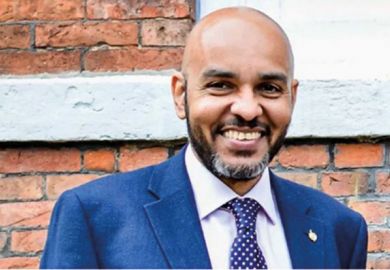A new study has attempted to lift the veil on how diversity is considered in admissions to the top PhD programmes in the US.
Among the key findings are that initial reviews of candidates tend to be dominated by traditional definitions of merit (grades and test scores), with little if any attention given to issues of diversity.
When diversity comes into play later in the process, professors on admissions committees seem to have a range of motives - some reflecting more than others a commitment to diversifying their fields. For instance, qualifying for more institutional funds for graduate fellowships seems a strong motivator for departments to give additional consideration to minority candidates.
The study, by Julie R. Posselt, assistant professor of education at the University of Michigan, has just been published in American Journal of Education.
For her study, Posselt observed admissions committee meetings and interviewed participants at 10 highly selective graduate programs, all highly ranked in their disciplines. The programmes are at three research universities and across a wide range of disciplines. Posselt writes that her agreement with institutional review boards required that she grant the professors and their institutions complete anonymity.
Posselt notes that there were of course lots of differences from faculty member to faculty member on what they most valued in graduate school candidates. But she writes that her emphasis in the paper is on themes that were present with many or most departments and faculty members.
For the PhD programmes Posselt observed, which don’t lack for applicants, the clear trend was that you only make the first cut with high test scores and top grades, preferably from prestigious undergraduate institutions. While many faculty members care very much about diversity issues, she writes, that doesn’t factor in when the winnowing starts.
Posselt said that many faculty members justified their reliance on traditional measures of merit by talking about why they are “risk averse” in admissions decisions. A classicist in one of the departments she studied told her that “there’s always a tension here because we’re always under pressure to have good numbers for completing a program, completing it in a reasonable amount of time, and so on. The effect of that is to make you risk averse because it’s not that hard just to go for the students you’re pretty confident can get through.”
A physicist told her: “If you work with the student so closely and then he walks away or doesn’t make it, then it’s a waste of his time and in a way, I mean, it’s our mission to teach, but I’d rather spend my time teaching somebody who actually can continue my mission and then teach other students than somebody who realizes, ‘It’s just too difficult. I can’t do it.’”
Grades and test scores are also highly valued by the minority faculty members who were interviewed, even those who said that they planned to make a push on diversity issues later in the process. One minority sociologist is quoted as saying: “You have to be above a bar, and then we can ask the diversity question.”
When faculty members are looking at those who have made a first or second cut, diversity appears to be more of a factor, Posselt writes, with different professors having different frameworks for considering the issue. Many spoke of an “obligation” to improve their discipline by making it more diverse. Sometimes this related to specific issues within a discipline. For example, philosophy professors - aware that their field currently has a reputation for being “macho” (their word) - said that they wanted to admit more women.
Faculty members also viewed themselves as competing for minority talent with other top programmes and assumed that they could predict who would be attractive to other departments as well. Many professors said that they view a healthy minority graduate enrolment as an important sign of a department’s prominence.
Competition is particularly intense, professors said, for black students. And many professors talk about the competition issue along with their goal of getting new and different ideas into their programmes.
However, even as faculty members on committees expressed philosophical commitment to diversity, Posselt observed financial motivations at play. Some universities offer extra funds for minority graduate students, so that a fellowship might be paid for from general university funds and not departmental funds. Where such incentives exist, they appear to have a strong impact, Posselt writes.
Posselt concludes her paper by questioning the current two-step approach in which diversity doesn’t get much attention at all initially, but then is added as a topic for consideration. She writes that “many of the students whose diversity contributions might have been considered assets had already been filtered from the pool”.
Departments may make only limited diversity progress in such an approach, she cautions. “The current two-tier review process relegates diversity to a secondary consideration, and it makes a standard of inclusive excellence conditional on conventional achievement,” she writes. “None of the 10 programs began with diversity as a major criterion. Yet, if a program deeply values diversity, then when they value it matters for the outcomes they are likely to achieve.”
Register to continue
Why register?
- Registration is free and only takes a moment
- Once registered, you can read 3 articles a month
- Sign up for our newsletter
Subscribe
Or subscribe for unlimited access to:
- Unlimited access to news, views, insights & reviews
- Digital editions
- Digital access to THE’s university and college rankings analysis
Already registered or a current subscriber? Login




